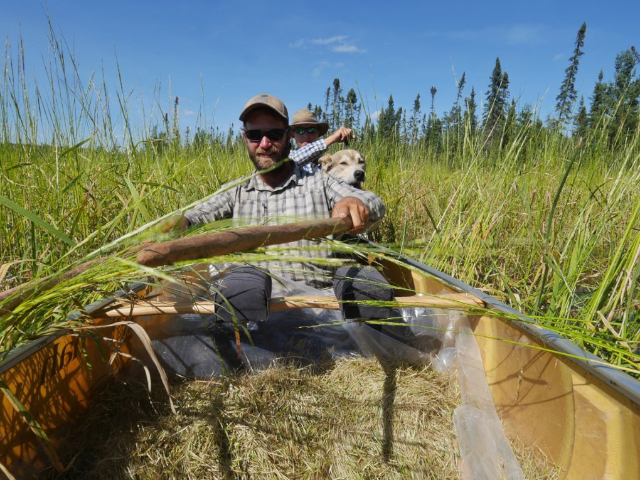Wild Rice is an indigenous Canadian food, gathered for eons by our first nations people and consumed as a staple by some. You may think Wild Rice is too expensive to add to your pantry. But once we’ve looked at the numbers, you may think otherwise…
 Harvesting Wild Rice
Harvesting Wild Rice
Underappreciated
I wasn’t surprised to learn, on detailed inspection of the Wild Rice Nutrition Facts chart, that this delectable starch is unjustly neglected by contemporary diners.
According to WebMD, “Wild Rice is packed with micronutrients and vitamins.” Including: Manganese Alpha Lipoic Acid, Vitamin B6, Niacin, Folate, Magnesium, Phosphorus, Zinc, and Copper.
The Nutrition Facts profile is promising:
- Calories: 101
- Protein: 4 grams
- Fat: 0.3 grams
- Carbohydrates: 21.3 grams
- Fiber: 1.8 grams
- Sugar: 0.7 grams
Lots of the good things. Little of the bad things.
On top of its essential benefits, Wild Rice addresses three of the major ills that challenge society today: Heart disease, Type 2 Diabetes and Obesity.
What’s a serving?
You’ll get a full cup of cooked Wild Rice from just 1/3 cup / 41 g of the dry product. And that’s the recommended serving size. So, you don’t have top use that much to harvest its benefits. On the other hand, a cup of rice is a fairly generous serving – unless you are Asian, and expect more. Three times a day.
Which brings us to an important point…
Wild Rice isn’t really Rice
It’s a grass that grows in shallow fresh water. And its seeds resemble the Brown Rice we’re all familiar with. But it’s a different plant altogether, genetically. And though I’ve called it an indigenous Canadian food, the fact is, it’s commonly found around the shores of lakes and rivers across middle North America.
And that leads us to differences in culinary applications and preparation…
Cooking Wild Rice
Wild Rice wants to cooked in lots of salted boiling water. It should be brought to the boil and then turned down to simmer for 45 minutes to an hour. The grains should be dancing around in he clear water with lots of room to circulate. When the husks split and reveal the white starchy endosperm inside, it’s done. Don’t expect Wild Rice to leech a lot of starch into the cooking water.
When used in recipes, pre-cooked Wild Rice may be called for. That’s another reflection of it’s greater resistance to absorbing water compared to true rice. DO followrecipes incorporating Wild Rice to the letter. There’s a reason for every instruction they give you.
The economics
Now the testy part. Wild Rice costs a LOT compared to true, conventional rice. But let’s look at the economics…
Wild Rice will cost you an average of $20 lb. / $44.00 kg. I can hear you gasping all the way over here. But lets break it down.
As we mentioned above, one serving of Wild Rice is 1 cup / 250 ml cooked. That’s 41 g dry. So, if you divide the serving size into the price of the retail bag, you get… A surprising $0.24 per serving! Now, that sounds more affordable, right?
And when you consider the nutritional advantages Wild Rice offers over conventional rice, it’s hard not to take a serious look at adding Wild Rice to your pantry.
And remember: Wild Rice is a very different grain than conventional rice. According to Taste.com: “Cooked wild rice has about 30 per cent fewer calories than brown rice, as well as 40 per cent more protein. It also contains more fibre, potassium and zinc. […] Winner: Wild Rice”
My take
I have Wild Rice in my pantry at all times. I love it for it’s crunch – and its rich, nutty flavour, which is very different, even from Brown Rice.
I consider Wild Rice not simply a starch, but a complex food that makes a really valuable addition to that 1/4 of your dinner plate that’s supposed to be filled with whole grains…
~ Maggie J.

